The Philadelphia Museum of Art has a new name and other plans to revive attendance
Published in News & Features
PHILADELPHIA — After 87 years, it’s not the Philadelphia Museum of Art anymore.
As of Wednesday, the city’s largest visual arts institution has a new, slimmed down name: Philadelphia Art Museum.
What’s more, the museum is now sometimes referring to itself under an even shorter sub-brand: PhAM. A new website url, visitpham.org, signals that, in the words of the museum’s head marketer, Paul Dien, the place today “is not your grandfather’s art museum.”
The new monikers are part of a larger rebranding of Philadelphia’s encyclopedic art museum a year-and-a-half in the making. Typography on signage and other materials has been modernized and made bold, language in ads and other materials rendered less formal and even irreverent.
“STOP IN THE NAME OF ART” says a boldface sign outside of the museum’s cafe and restaurant, reminding visitors — firmly but playfully — not to take food or drink into the galleries.
Museum guards are getting a fashion makeover to make them appear less “intimidating” and more “inviting.” Concerts and other events are being planned, geared to a hip crowd.
All of this, museum leaders hope, will broadcast a more accessible vibe that will revive weak attendance numbers and stanch a series of operating deficits that have bedeviled the organization for several years.
“I think at the end of the day, what we’re trying to do is drive attendance — you know, keep the doors open,” said Dien, the museum’s chief marketing officer. “We have so much research that shows there is this brand perception that we’re the castle on the hill. And so my job right now is [to ask], ‘How do we come down the steps and meet people where they’re at?’”
“It’s going to bring people in and help put us more clearly on the map,” said museum director and CEO Sasha Suda of the rebranding.
Embracing sports, hip hop, and ... Sylvester Stallone
The changes go beyond style and into substance.
Like other arts groups, the museum is increasingly dabbling in sports and pop culture — with a distinct Philadelphia flavor. It has formed partnerships with sports figures like Saquon Barkley and Malcolm Jenkins, and discussions are underway with the Roots for the hip hop band to become artist-in-residence.
“It’s so part of their mystique as a band, the Philly love,” said Dien.
The museum’s Friday night performance series — the only day of the week the doors are open past 5 p.m. — will soon launch a DJ-in-residence program using playlists inspired by the art collection.
The nearly 150-year-old art museum is also embracing a part of its image that it never sought, and has sometimes rejected. It is organizing a show encompassing sports, which includes the Rocky statue. The show is being curated by Paul M. Farber, who is host, creator, and executive producer of the podcast The Statue.
“It’s really inspired by Paul’s podcast,” said Suda, “which to me is a nod to how galvanizing that sculpture is in bringing people together in their hardships. It’s about that grittiness. It’s about that resilience that people have, which is embodied by the sculpture of Rocky. And of course, in many ways, it’s Sylvester Stallone’s story, right?”
The museum hopes that some of the millions who make the pilgrimage to have their picture taken with the statue will not only run up the steps, but also come inside.
The show — which may include a painting by Stallone himself — is expected to open in 2026 and is part of an embrace between Stallone and the museum.
“It’s an ongoing relationship that we’ve been cultivating because for me, as a marketer, I see it as someone who will reach new audiences, someone who has a massive platform,” said Dien. “I think what we’re trying to do is say, ‘Hey, this is part of our DNA and it’s also part of the DNA of Philly,’ and why do we want to shy away from that, right?”
An elusive pandemic recovery
Leveraging relevance is seen as key to bringing back visitors.
A decade ago, then-PMA director and CEO Timothy Rub outlined a “critical goal” to increase annual attendance to an average of a million visitors within five years. The museum is still far from that number.
For the fiscal year ending June 30, 2025, paid and nonpaid attendance was 672,484 — well short of the 773,511 it was the last full year before the pandemic.
The attendance forecast for this year calls for a slight increase, to 731,000, as well as a deficit that follows other recent ones — this time around $2 million on a budget of $62 million, said Suda.
Other ambitions await an improved financial picture, like the question of what to do with the Perelman annex across the street, an impressive Art Deco structure that the museum closed to the public during the pandemic and never reopened.
Suda would like it to host both research programs and the general public, but, she said, “that’s a bit of a dream. It’s on the horizon line until we’ve tackled this deficit and really feel like we have the plan in place for the next five years.”
Other big projects must also be prioritized, such as deferred maintenance on the main building, and raising an endowment more in line with an institution of the museum’s size. “We’re not currently in a campaign, but we are always fundraising for endowment and capital needs,” a spokesperson said.
Next up, Suda says, is a new Frank Gehry-designed educational center just inside the museum’s north entrance. The campaign for that is $50 million, according to the museum’s strategic plan of a year ago, but the spokesperson said the museum was not “far enough along in the project to comment on cost or specific plans” for the center.
The museum isn’t alone in its attendance woes. Slightly more than half (55%) of U.S museums have not recouped their pre-pandemic attendance numbers, according to a forthcoming survey by the American Alliance of Museums that drew data from 511 museums (of which 98 were art museums).
Part of what’s going on in Philadelphia, said Dien, is that “tourism numbers have been down this year in ways that we weren’t anticipating.” Visitorship from New York has not rebounded, said Suda, adding: “That is a code I would love to crack.”
Boldfacing Philadelphia
The museum is, therefore, focusing on the local market. A billboard campaign namechecks Fishtown and South Philadelphia. Fonts for signs in the museum were inspired by old Philadelphia signage. Emphasizing Philadelphia extends to the new logo, which brings back the griffin image taken from the sculptural element adorning the museum’s roofline.
The museum’s name was formerly rendered in thin, elegant type with Art written larger than the other words. The new logo looks almost like a coin, with the new name circling around the edge and the griffin in the middle. It was designed with social media, video, and motion graphics in mind.
“Given the media landscape and kind of the avalanche of content, as a marketer, I have three seconds to capture someone’s attention. And so the current systems were just not made for the digital age,” said Dien.
(The new website includes a couple of “Easter eggs,” including a version of the logo whose words spin when you place the cursor over it.)
As for the brand change, PhAM was thought to echo the words Philadelphia or family, and the streamlined Philadelphia Art Museum name was simply an acknowledgment of the reality on the ground, said Luis Bravo, the museum’s design director.
“We did a lot of testing around the name and felt that ‘the Philadelphia Museum of Art’ felt a little bit formal and maybe a little bit out of step with the colloquial way that people speak about us,” said Bravo.
The museum isn’t changing its name legally, which it took in 1938 — just its “consumer-facing” name.
The new look will be phased in over the coming months. The first show to be marketed under the rebrand is “Dreamworld: Surrealism at 100,” which opens Nov. 7.
“I think that ‘Surrealism’ should be a big boon for us,” said Suda.
The show opened in Europe, but, like a lot of the rebranding, it will come infused with a distinct Philadelphia flavor. Nearly 40% of works in this iteration of the show are from the museum’s own collection.
It’s another indicator, said Suda, that the Philadelphia Art Museum is “of Philadelphia, of this place. But we’re playing for the world, and we’re of the world.”
©2025 The Philadelphia Inquirer, LLC. Visit at inquirer.com. Distributed by Tribune Content Agency, LLC.
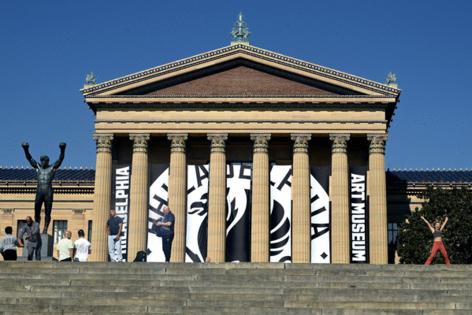
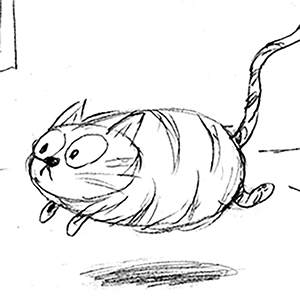
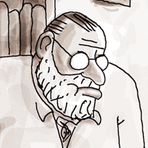

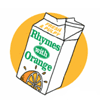
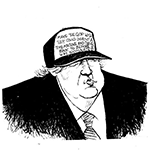

Comments